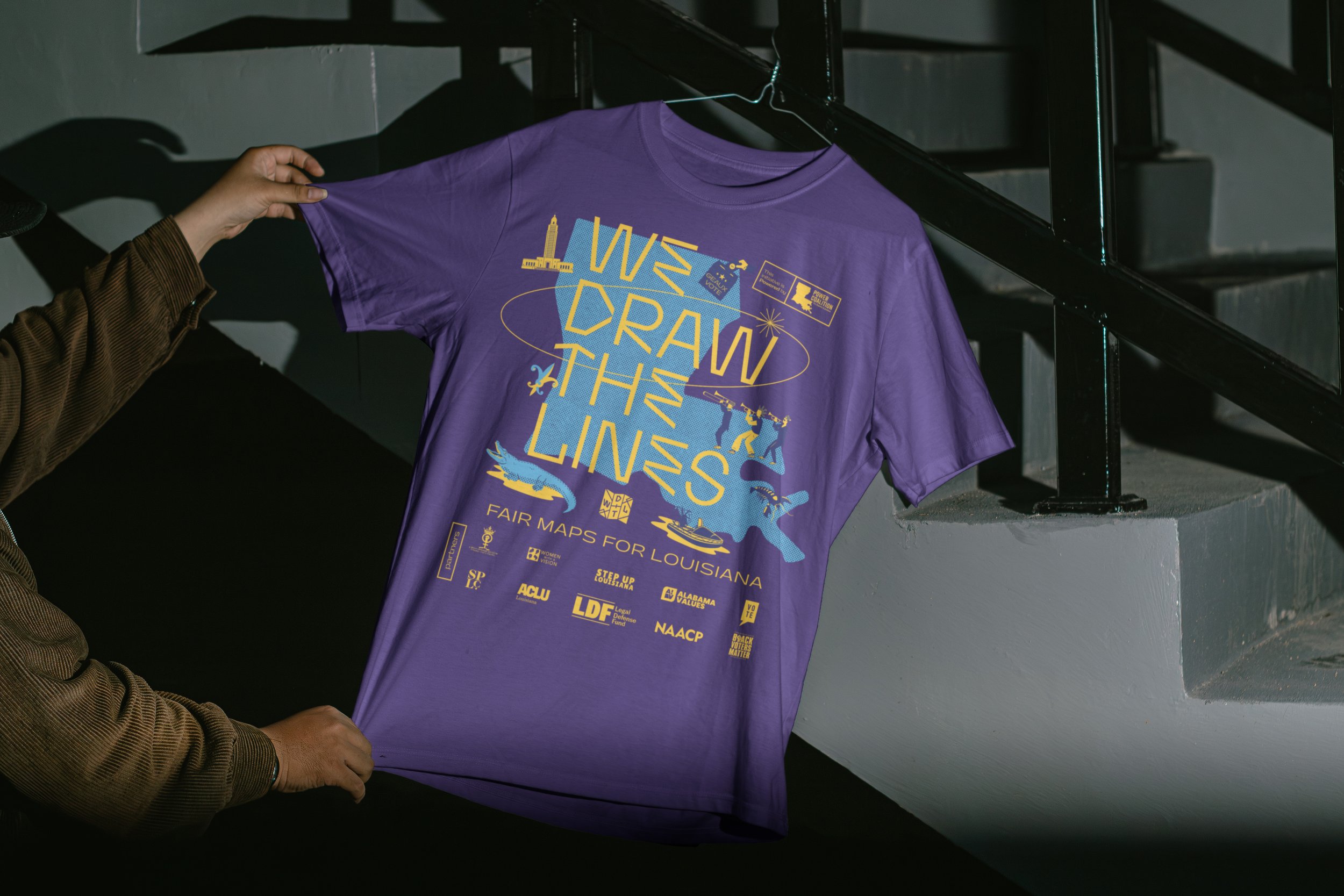Client: Power Coalition for Equity and Justice & Alabama Values
Project Title: We Draw The Lines Louisiana – Narrative & Mobilization Support for Robinson v. Callais SCOTUS Case
Creative Agency: Of Noble Folk
Role: Creative Director & Lead Designer
Budget: $7,500
Team:
Graphic Design (Shirt Design): Andrew Thompson
Videography: Jabari Jenkins, Jaylon Lawery,
Photography: Kevin Crook
The Challenge
The Robinson v. Callais Supreme Court case is a high-stakes redistricting lawsuit that could reshape the political landscape in Louisiana—and set a precedent across the South. Power Coalition and Alabama Values needed a campaign that could do more than explain a legal battle. They needed a cultural movement—one that translated policy into power, and courts into community action.
With a modest budget and national implications, the ask was clear: build a powerful visual identity and storytelling engine that could educate, mobilize, and inspire sustained advocacy around the fight for fair maps.
The Strategy
We grounded the campaign in a core belief: "We draw the lines—not politicians." This reframed redistricting as a question of agency and ownership, tapping into historical truths and cultural pride within Black and Brown communities. The narrative also spoke directly to grassroots organizers, activists, and students—positioning them not as observers, but as the architects of democracy.
To maximize reach and resonance, we developed a flexible creative system that could show up across digital platforms, print collateral, apparel, and in real-time at rallies and organizing events. This system combined emotionally charged visuals, social-first video, bold typography, and a Southern Black cultural aesthetic rooted in resistance, rhythm, and resilience.
The Execution
We launched We Draw The Lines with a full suite of deliverables, including:
Brand Identity: A new visual system built around hand-drawn typography, warm color gradients, and collage-style illustrations, symbolizing both literal map-drawing and community-led storytelling.
Print & Digital Collateral: Rally posters, social graphics, and event materials that were bold, legible, and designed for mass reproduction—often wheatpasted or handed out at actions.
Merchandise: Limited-run t-shirts featuring original slogans and hand-drawn illustrations that attendees could wear as badges of solidarity.
Video & Photography: Cinematic short-form videos and dynamic photography captured the spirit of the movement on the ground—energized, youthful, and ready to act.
Through tight art direction and cultural fluency, the campaign reflected the stakes and the style of the people it aimed to mobilize.
The Results
High-Energy Launch at the Supreme Court: Our assets debuted during the oral arguments in Washington, D.C., where rally attendees held our posters, wore our shirts, and became walking billboards for the cause.
Cultural Virality: Photos and footage from the event were shared widely across social platforms, increasing awareness far beyond Louisiana.
Movement Building: Our messaging toolkit empowered partner organizations and digital creators to localize and adapt the campaign for their own communities.
Enduring Impact: The visual language continues to be used in organizing materials, sustaining advocacy and voter education beyond the initial case hearing.
Why It Mattered
We Draw The Lines wasn’t just a campaign—it was a cultural intervention. It brought clarity and urgency to an issue often buried in jargon, and it did so by placing people, not politicians, at the center of the narrative. Through creative direction grounded in Black Southern identity and political urgency, we helped make a Supreme Court case feel local, personal, and worth fighting for.











